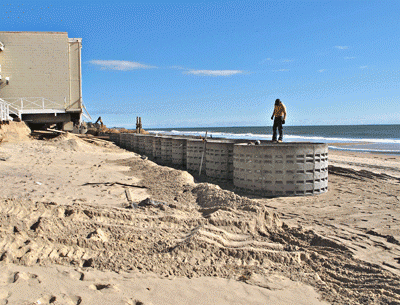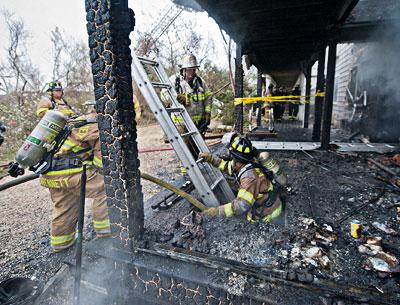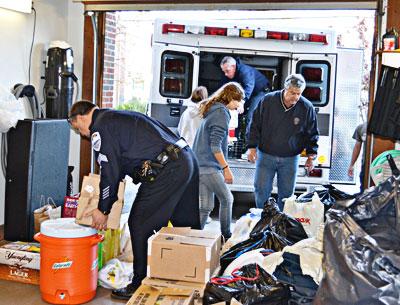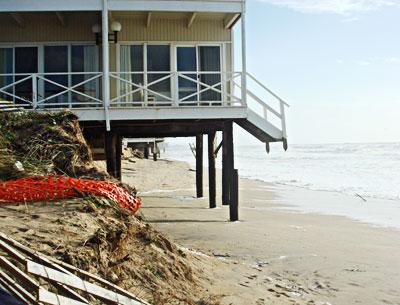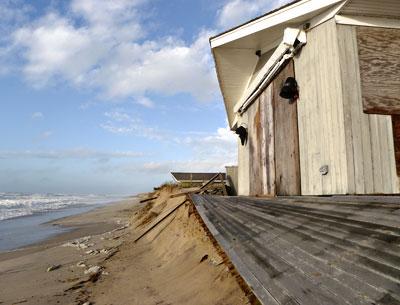Hashing Out Deer Plan
Hashing Out Deer Plan
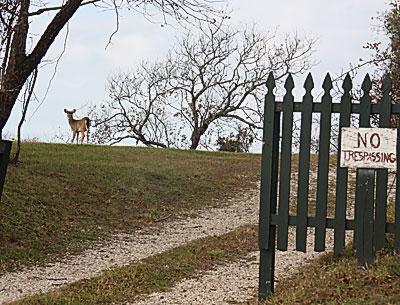
Faced with increasing concerns about collisions between cars and deer, diseases that can be transmitted by ticks that deer carry, and the toll that grazing deer take on farmers’ fields and home plantings, the East Hampton Town Board has been reviewing a draft deer management plan.
Developed by a committee that included representatives from groups such as the State Department of Environmental Conservation, the Group for the East End, the East Hampton Group for Wildlife, the East Hampton Sportsmen’s Alliance, and the state and county parks departments, along with Councilman Dominick Stanzione, the plan, the first methodical approach to deer control by the municipality, discusses a number of options.
They include an initial sharp reduction of the herd by culling to reduce the number of deer by half within five years, attaining “an ecologically and culturally sustainable level,” according to the report, followed by the implementation of non-lethal population-control techniques, such as contraception.
Other recommendations include taking a multi-town, regional approach, opening more lands to hunters, including nonresidents, amending state and local laws to allow an increased take, establishing a nuisance deer hotline, and facilitating efforts by adjoining landowners to allow nuisance hunting on particular lots.
The plan suggests that the town board might eventually consider revisions to local laws regarding deer fencing, with an eye to restricting it in order to preserve wildlife corridors and vistas as deer-management efforts begin to bear fruit.
The committee, Mr. Stanzione has said in presentations to the board, tried to incorporate differing views, including those of hunting opponents who, he said, “in the past, may have had an impact on boards’ not acting” decisively on the deer problem.
Any management plan, the committee report says, should address coordinating efforts among the various entities that own and manage open land in East Hampton. “Local preserved and native ecosystems have incurred some of the most significant environmental damage,” the report says. “The drastic negative environmental impacts to the forest understory and the ecology of non-forest habitats also damage populations of other wildlife. The absence of any coordination across land management constituencies has contributed to the damaging growth in the deer population.”
The draft plan will be the subject of a hearing at Town Hall on Dec. 6, and could be revised before its final adoption.
It is already agreed, however, that regardless of what further steps the town might eventually take, the first necessity is to get an accurate count of the size of the deer population here. Before adopting the 2013 budget last week, board members agreed to add $40,000 to get such a survey done.
According to Marguerite Wolffsohn, the town planning director, an actual count of the herd is done using an aerial survey, with infrared photography, during the winter months, according to procedures developed by the wildlife services division of the U.S. Department of Agriculture. Each individual animal can be identified to get an actual number of deer, versus other survey methods, which develop an estimate based on observations and extrapolation.
Afterward, should the town decide to bring in sharpshooters, for instance, for an organized hunt, ground surveys would also be done to determine the deer herd’s distribution and movements in order to better plan and ensure the effectiveness of the hunt.
In recent weeks, the town’s budget and finance advisory committee had recommended the addition of $100,000 to $150,000 to the 2013 budget to cover not only the cost of the population survey, but also $20,000 to coordinate an effort to identify and enlist landowners in a culling program, and $50,000 to $100,000 to initiate the culling, using trained sharpshooters.
According to a deer population estimate developed in 2006 by extrapolating numbers of deer observed along roadsides across the acreage of the town, there were about 3,293 deer in East Hampton then, or about 51 deer per square mile.
The study was commissioned by the East Hampton Group for Wildlife, a local group that opposes hunting and has said it cannot support a deer management plan that calls for reduction of the herd by lethal means.
In a presentation to the town board earlier this year, the group’s representatives said that the 2006 population numbers were “somewhat higher than wildlife managers generally prefer in the eastern United States, but not alarmingly high.”
However, Ms. Wolffsohn told the town board during that meeting that those numbers should instead be 20 to 40 deer per square mile — and the deer population is assumed to have increased significantly over the last six years.
In response to the draft deer management plan, the East Hampton Group for Wildlife sent the town board an alternative proposal titled “Deer: A Humane Plan.” The group believes, according to the plan, that “with some ingenuity, the town can address perceived problems through non-lethal means.” Researchers have documented a rebound effect, showing that deer give birth to more fawns after hunts, according to the report.
The steps outlined include not just a new deer census but also one that would provide information about where deer most frequently cross highways, so that the town can focus efforts to reduce collisions between autos and deer.
Other initiatives that the town should pursue, according to the Group for Wildlife plan, are a slow-driving campaign and an evaluation of the efficacy of roadside reflectors that are designed to discourage deer from crossing a road when there is an oncoming vehicle. After a trial conducted by the group in 2008 along Stephen Hand’s Path in East Hampton showed “very promising” results, more reflectors were installed last year, now covering a 1.2-mile stretch in total, and the results of a new analysis are anticipated by the end of this year.
“If the reflectors prove effective, the town board should encourage private residents and groups to fund expanded installations,” according to the report.
The alternative plan also suggests discouraging deer fencing on residential properties and promoting deer-resistant plantings. Wildlife sanctuaries should be considered, the group says, noting that hunting is allowed in many of the town’s designated nature preserves. Sanctuaries would “reduce the pressure to seek safety in the no-hunting residential areas” as well as the stress that might trigger increased births, the report says. The group supports conducting a pilot immunocontraception program, which it has been promoting for some years.
The report also recommends an objective study of the extent of damage to the woodland understory and the extent to which deer are responsible. It suggests developing recommendations for ways to alleviate the problem.
As for Lyme disease, the Group for Wildlife recommends that the town educate the public about how to avoid tick bites and stop the hunting of turkeys, which eat immature ticks. Because Lyme disease is initially spread by ticks that feed on the white-footed mouse, the report says, “it’s unlikely that any reduction of deer populations can alleviate the disease.” The group suggests that the town look into the use of “four-poster” stations or bait boxes that would distribute tick-killing chemicals on both deer and mice.
“We do not wish to lose sight of the moral value of adopting non-lethal strategies,” the East Hampton Group for Wildlife report concludes. “It’s an approach that reflects compassion and respect for other living beings.”
The shotgun-hunting season for deer begins at sunrise on Jan. 7 in Suffolk County and runs through sunset on Jan. 31, on weekdays only. Applications for a lottery for permits to hunt on town land will be available in the town clerk’s office beginning on Dec. 3, according to a resolution passed by the town board last Thursday. The lottery applications must be returned to the town clerk by 4 p.m. on Dec. 21 in order to be eligible for inclusion in the lottery drawings. Bow-hunting season for deer began Oct. 1 and extends through the end of December.

